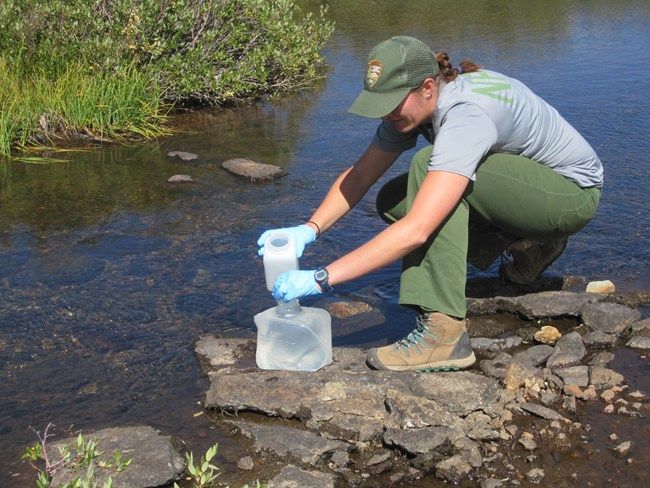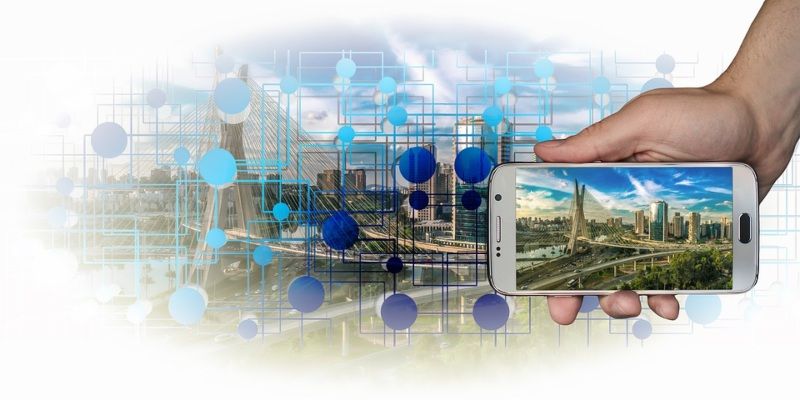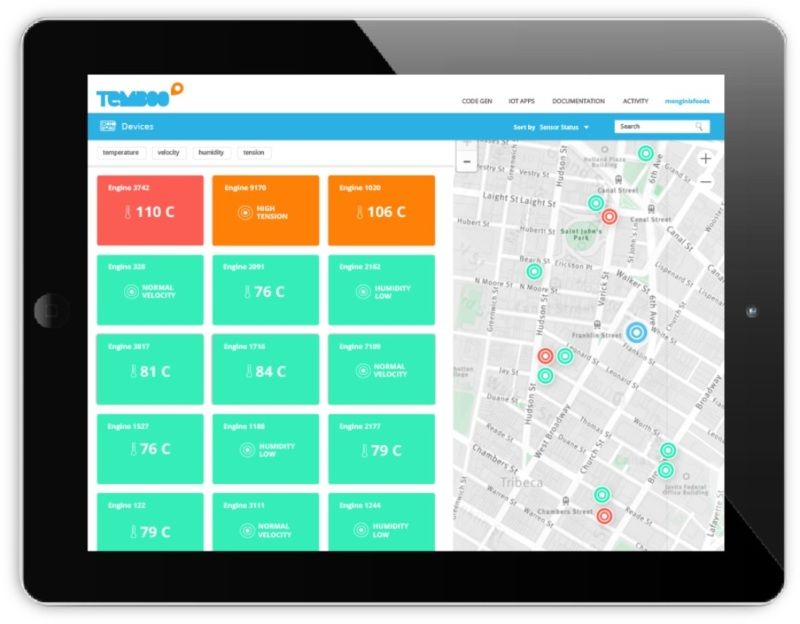Why Environmental Monitoring with IoT Could Solve the Climate Crisis
Published on by Water Network Research, Official research team of The Water Network in Technology
According to the Washington Post, pollution around the globe now contributes to an estimated 9 million deaths annually — or roughly one in six people.

Image source: Pixabay
With sprawling population growth comes more industrial-based jobs resulting in massive increases in pollution. Combine swelling population growth and pollution with more severe droughts, floods, and storms and it becomes clear that finding a solution to climate change is of the utmost importance.
So how do we protect our only planet? One way is by collecting environmental data to understand our physical world, and then using it to influence policy, draw attention to local and national issues, and pursue pathways to solving this global crisis.
Environmental monitoring is the collection of measurements from the physical world that determines the status and trends of environmental conditions. It is critical to the protection of human health, environmental sustainability, and policy development.
Environmental monitoring data is being used to:
- Influence sustainable policy development
- Inform where improvements can be made for policymakers
- Set benchmarks for geopolitical cooperation to address the Sustainable Development Goals
- Provide ways for businesses and organizations to save money while contributing to a greener planet at the same time.
Environmental Monitoring Today
Environmental monitoring efforts around the world are disparate, and inconsistent at best.
Very few countries in Europe and Central Asia are able to maintain monitoring systems. Even then, the lack of consistent data is oftentimes difficult to overcome.

Image source: National Park Service, labeled for reuse
Why Is Traditional Environmental Monitoring So Difficult?
As a former environmental consultant, I can attest that the current process of collecting environmental data can be extremely difficult. Why? A number of factors including:
- Time-consuming sampling: There are sampling locations designated by an environmental management plan for when a storm sweeps across a region. As an environmental consultant, sampling these locations and then recommending how best to reduce pollution is your job. For example, there can be up to 5 sampling locations on a construction site. Last year alone, the Department of Buildings in New York gave out 168,233 construction permits. Let’s do some quick math. Assuming each construction site has 5 sampling locations, that's is 841,165 samplings done per rain event.
- Red tape: As storms are becoming more frequent and severe, an environmental consultant can spend almost their entire workweek in the field. By the time they get back to the office, the amount of paperwork is profound, and in a moments notice, another rain event is rolling through and the consultants are back in the field.
- Cost : The tools required for environmental monitoring can be very expensive. For water quality sampling, one portable turbidity meter can cost anywhere from $400.00 – $1,300.00. Imagine if an area required sampling in five different locations that must be sampled before, during, and after. An organization would have to pay for the consultant’s time with the cost of the sampling materials factored in as they have to be on-site for the entire duration of the storm.
Taking Environmental Monitoring to the Future with the Internet of Things
As the Fourth Industrial Revolution is set in motion, environmental monitoring with new technologies like the Internet of Things (IoT) can help to protect our natural resources as we have never seen before.
IoT can be the inner workings behind a healthy society that has a bountiful of clean air, water, and an abundant amount of fresh food without expensing the environment. Why? Because internet-connected sensor solutions can provide:
- Real-time insights
- Predictability via machine learning
- SMS/text alerts
- Actuator functions
- Data Sharing
- And more…
Mesh Networking & the Internet of Things
Creating a mesh network – which is an infrastructure of nodes (machines/sensors) that are wirelessly connected to each other – is one way that IoT can overcome traditional environmental monitoring practices.
These “nodes” or sensors can be spread out in a given area to collect data. The data is then shared as the sensors piggyback off one another other to extend a radio signal on a network to relay information to a central hub.
By installing a mesh network of environmental monitoring sensors, continuous and periodic data collection and recordings can be made available to stakeholders – be it to management, public authorities, and the general public.
Imagine if your city had air quality sensors hidden in the infrastructure that constantly pulled data about the air you breathe. If a carcinogen was released on the outskirts of your city by accident, you could get an alert telling you that the current air quality is dangerous, and to “please stay inside”.
Traditionally speaking, it would take time for an environmental consultant arrives in this area, take measurements, and recommend the best way to mitigate the source of pollution.
But with a mesh network, the data would become immediate, helping the environmental consultant make quicker recommendations. As a result, citizens would be aware of their surroundings, and city leaders would be able to make evidence-based decisions ASAP.
.jpg)
Image source: Pixabay
Environmental Monitoring Data and Local Government
If environmental monitoring data was made available to the public, private citizens and community groups would be able to bring up problems like air quality concerns to local government officials and push for new legislative policies to protect their communities.
The local government could even combine this data with geographical information systems (GIS) to better understand an affected region and push through new compliance regulations.
In short, the more the environmental monitoring data is made available, the better equipped we are to advocate and enact policies that can dramatically improve our quality of life.
Can Environmental Monitoring Be Affordable?
Ten years ago, environmental sensing hardware could cost well into the thousands of dollars for a single monitoring device.
Today, environmental monitoring hardware and software is now more affordable than ever before and can be integrated with a light touch.
There are hundreds of hardware manufacturers that are producing utility-grade sensors with great accuracy at a low cost and ruggedizing hardware has become much easier thanks to new technologies like 3D printing.
Environmental monitoring software is also evolving such that you no longer need an IT employee to install a software program. As the culture of IoT software shifts to become more democratic thanks to things like machine-generated and low-code software options, everyone can learn about their physical environment in real-time in any part of the world.
It’s a beautiful thing when we can learn and share our knowledge with one another.
.jpg)
Kosmos IoT Solution by Temboo
IoT Systems for Environmental Monitoring of our Physical World
1. Air Quality Monitoring
Air pollution is deteriorating both the human and environmental health of the planet.
In fact, according to the World Health Organization, an estimated 4.6 million people die each year from causes directly attributable to air pollution.
IoT Air Pollution Solution:
Air pollutant concentration is heavily affected by wind and topography. Having a mesh network of interconnected sensors that read the temperature, humidity, nitrogen oxides, particulate matter, sulfur, and wind speed would be ideal for monitoring air quality. The data could pinpoint the source of pollution or areas greatly impacted by pollution.
2. Water Monitoring
Protecting water resources – be it freshwater, groundwater, rainwater, ocean water, recycled water, or brackish water – continuously ranks in the top 10 environmental risk factors in the World Economic Forum’s Global Risk Report for the past 6 years.
Why? Because water has an intrinsic environmental and socio-economic value, and without it, we die.
Collecting and sharing water data is critical to our survival. From a geopolitical perspective, countries are fighting over depleting transboundary freshwater resources.
Take Syria for example. Millions of people have fled their homes due to a depleting water system exacerbated by transboundary political issues.
From an environmental perspective, coral reef bleaching is decimating oceanic ecosystems and plummeting fisheries around the world.
Imagine if we were able to collect ocean and freshwater data in real-time and share it with stakeholders. We could make evidence-based decisions to protect our waterways that would extend beyond the local community to protect people downstream.
IoT Water Pollution Solution:
Water quality monitoring parameters are fairly common but the thresholds are different depending on which standards are used.
These parameters can include dissolved oxygen, pH, salinity, turbidity, conductivity, biological contaminants, sulfate, phosphate, etc.
For example, if a city had a network of water quality sensors embedded into their waterways, CSO outflow points, and intertidal zones, water conditions would be available in real-time. Stakeholders would know the current status of their conditions at all times. The sensor data would also give insight into how the water systems are reacting to current weather conditions and inform better management practices.
3. Soil Monitoring
Seventy percent of the world’s freshwater resources are used by agriculture.
But wait, we have a growing population and we have to feed all these people! How do we do it? Well, we need to farm more efficiently.
Traditional methods of watering crop fields are incredibly wasteful.
The runoff then flows down the river and enters oceans causing eutrophication and fish kills in communities whose livelihoods depend on the ocean.
Ever heard of climate change refugees? They are real people who are leaving their homes due to rising sea levels, fish kills, and overfishing.
IoT and Soil Moisture Solution:
The best way to stop this collateral damage is to address the root of the problem with soil moisture monitoring. I have a soil moisture sensor from NCD sitting on my desk right now, and it is not only incredibly durable and accurate, but the price point is low, and the sensor will last for 5-7 years.
More importantly, if these low-cost sensors were implemented on farms, farmers would be able to tell which areas on their land are dry, the pH, levels of the crops, and which areas are oversaturated with water.
The farmer could then choose when and how to water their crops. Not only does this IoT solution save money by reducing water usage, but it also aids in reducing soil erosion and eutrophication downstream.
References :
- Brady Dennis, "Pollution kills 9 million people each year, new study finds", The Washington Post
- The Global Risk Report 2019, 14th Edition, World Economic Forum
- The 2030 Agenda for Sustainable Development, United Nations
Attached link
https://blog.temboo.com/environmental-monitoring-with-iot/Media
Taxonomy
- Monitors
- Data Management
- Water Monitoring
- Remote Sensing & Data Analysis
- Water Monitoring
- Envirionmental Data Management
- Water Quality Monitoring
- Database Managment
- Database Software
- Data Acquisition
- Data Center Management
- Monitoring Technology
- Remote Monitoring & Control
- Internet of Things (IoT)
- Data & Analysis
- Smart Water Monitoring
3 Comments
-
As we all know the Earth has no problems. People are the problem. starting with governments to multi national companies. The already proven beyond a doubt no man made climate anything. If a single global elite effort can negate a binary star's orbit let me know! Besides being utterly ridiculous one item stands out. all points begin with IF. The only one IF missing is IF pigs had wings they could fly.
-
-
Не нужны никакие мониторинги - необходим новый взгляд на климат. Надо прекратить издевательство над водой - вернуть воде ее природные функции.